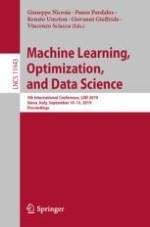2019 | OriginalPaper | Buchkapitel
Simple and Accurate Classification Method Based on Class Association Rules Performs Well on Well-Known Datasets
verfasst von : Jamolbek Mattiev, Branko Kavšek
Erschienen in: Machine Learning, Optimization, and Data Science
Aktivieren Sie unsere intelligente Suche, um passende Fachinhalte oder Patente zu finden.
Wählen Sie Textabschnitte aus um mit Künstlicher Intelligenz passenden Patente zu finden. powered by
Markieren Sie Textabschnitte, um KI-gestützt weitere passende Inhalte zu finden. powered by
